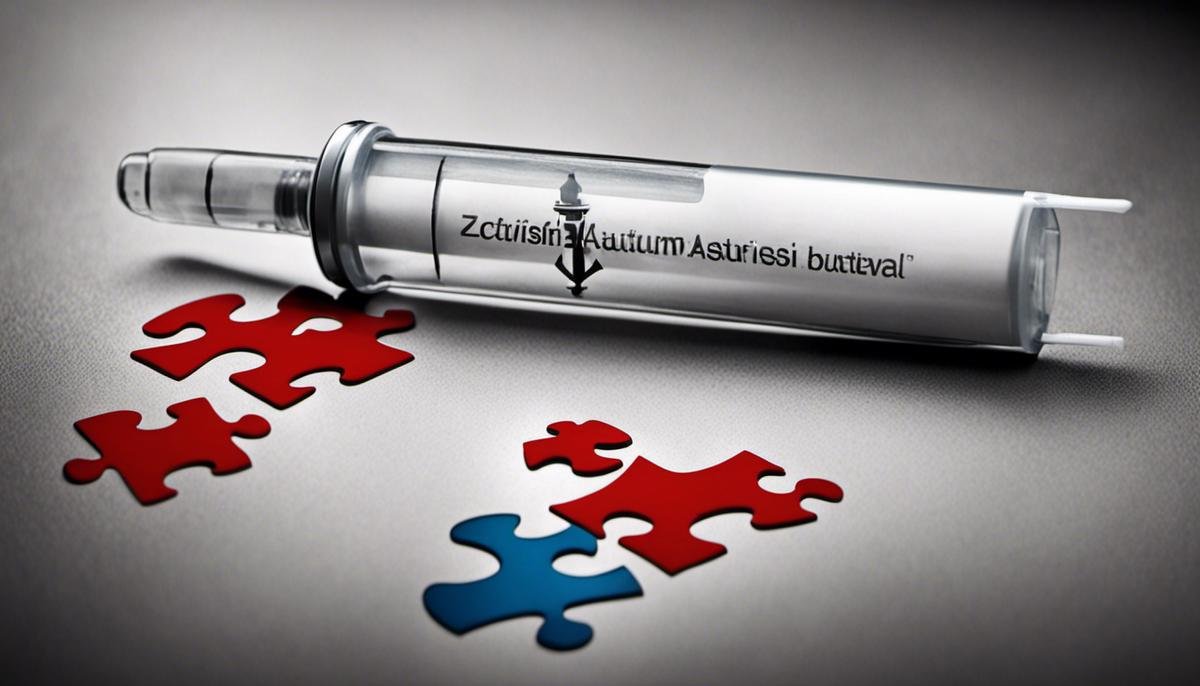
Autism, also known as Autism Spectrum Disorder, is a broad range of conditions characterized by challenges with social skills and repetitive behaviors. However, due to varied and often misunderstood portrayals, several myths and misconceptions about autism have permeated into general awareness.
This discourse seeks to elucidate our understanding of autism, debunk common myths, and provide concrete strategies for fostering inclusivity. The journey towards understanding autism is less about dispelling untruths and more about celebrating the diversity and richness that those on the spectrum bring to our world.
Understanding Autism
Understanding Autism: Unfolding the Diagnosis Pathway
Even before embracing the intricate yet delightful world of parenting, most of us have encountered the term ‘autism.’ It pops up in casual conversations, forms the plot of a movie, or crossed paths during a scrolling spree on your favorite social media site.
Autism, or autism spectrum disorder (ASD), is a developmental disorder that affects communication and behavior. Although we often think of children when we talk about autism, this disorder extends into adulthood. The “spectrum” in ASD means it encompasses a wide range of complexities, with some folks requiring substantial help in their daily life, while others live independently.
Recognizing the Symptoms
Early observance of developmental milestones is critical in recognizing autism. Acting early could make a world of difference, and so, keep an eyes peeled for any early signs such as:
- Delays in speech or non-verbal communication.
- Repetitive behaviors, like rocking or hand-flapping.
- Intense interest in certain activities or subjects.
- Difficulty understanding other’s feelings or expressing their own.
- Struggling with changes in routine.
It’s essential to keep in mind that having one or more of these symptoms doesn’t necessarily denote autism. Our tiny tots have their own pace and individuality in reaching their milestones.
Unfolding the Diagnosis
Denoted as a ‘spectrum,’ diagnosing autism is not as straightforward as a physical condition. A multi-disciplinary team of professionals such as pediatricians, child psychologists, or a psychiatrist usually conduct this evaluation, encompassing:
- Developmental Screening: This is standard during regular well-child checkups at 9 months, 18 months, and 24 or 30 months. Additional screening might be needed if a child is at high risk for ASD or if symptoms are present.
- Comprehensive Diagnostic Evaluation: This step involves a more detailed examination that may include observing the child’s behavior, conducting interviews with the caregivers, and applying standardized tests to assess cognitive level and language abilities.
Autism is a lifelong journey, but early detection and intervention can significantly impact a child’s development, helping them unlock their full potential. As caregivers, noticing and respecting our children’s unique development pace while staying informed and proactive about their mental health will pave the way for a nurturing environment where every child can flourish.
Always remember, each child, with autism or not, brings a unique spark into our world. All they need, and rightfully so, is understanding, acceptance, and unconditional love.

Myth 1: Vaccines Cause Autism
Article:
Many parents find themselves grappling with the question: Do vaccines really cause autism? This is a topic surrounded by quite a bit of misinformation, with some claiming a clear link between the two. However, it is crucial to sift through the noise and focus on what scientific research tells us.
Decades of extensive study have been devoted to the question of whether childhood vaccinations contribute to the development of Autism Spectrum Disorder (ASD). The answer, unanimously echoed by the global scientific and medical communities, is a resounding no. There is no credible scientific evidence to support a link between vaccines, including the MMR (measles, mumps, and rubella) vaccine, and the onset of autism.
One of the largest studies on this topic was carried out in Denmark and involved more than half a million children. It found no increased risk of autism in children who had been vaccinated with the MMR vaccine compared to those who had not. Similar results have been replicated in numerous other studies worldwide.
The initial fear regarding vaccines’ role in causing autism stemmed from a 1998 study published in The Lancet by Andrew Wakefield. This study suggested that there might be a link between the MMR vaccine and autism. But it’s vital to know that the research was later found to be seriously flawed. The journal retracted the article in 2010, and Wakefield was barred from practicing medicine in the UK. Despite the retraction, the myth that vaccines cause autism has persisted.
The Centers for Disease Control and Prevention (CDC), the National Institutes of Health (NIH), and the World Health Organization (WHO) — among many other respected health and scientific organizations — all agree: Vaccines do not cause autism.
As parents, it’s natural to worry about the health and safety of our children. And it’s entirely reasonable to question, research, and seek out reliable sources for health information. However, the overwhelming consensus among health professionals is that vaccines save lives and do not cause autism. They protect your child — and the broader community — from dangerous and potentially life-threatening diseases.
While we continue to strive for greater understanding of autism and its causes, it’s critical not to lose sight of the importance of protecting our children from easily preventable diseases. Vaccinations are a crucial part of this protective shield. Ultimately, the decision to vaccinate is one of the most important choices parents make to safeguard their child’s health, both now and in the future.

Myth 2: Autistic children cannot show affection
Are Autistic Children Incapacitated in Displaying Love and Affection?
A common question that arises when discussing autism is, “Are children with autism incapable of expressing love and affection?” This is rooted in the mistaken belief that because these children may have difficulty with social interaction and communication, they are incapable of forming emotional bonds. However, this belief is incorrect and can unfortunately lead to misconceptions that negatively impact the way society perceives and supports autistic children and their families.
Children with autism are not only capable of love and affection, but they express it in deeply profound and unique ways. It’s crucial to understand that love isn’t solely expressed verbally. Even the smallest gestures — a look, a touch, a smile — can convey immense amounts of affection. Autistic children may demonstrate their fondness through unconventional means, but this does not diminish the depth or authenticity of their feelings.
For instance, an autistic child might show attachment by engaging in shared activities, such as watching favorite cartoons together or participating in a beloved routine. Other children may prefer to display love and affection through physical displays, like hugging or holding hands. It’s also typical for an autistic child to show love by giving complete attention to the person they are fond of, for example, by readily including them in their favorite activities.
These children might also affiliate particular objects or subjects with loved ones, expressing affection by discussing a shared interest or presenting a significant object. Autistic individuals are known for their often intense interest in particular subjects, and including someone in this passion is a powerful demonstration of love and care. It’s essentially their unique love language.
So, the answer is a resounding “No” to the question, “Are children with autism incapable of expressing love and affection?” Their way of demonstrating love may differ from typical expressions of affection, but it is no less real or valid. Mind you, different doesn’t equate with deficient; it’s simply different.
In conclusion, society should endeavor to understand the unique love languages of autistic children better. Doing so will not only dispel harmful misconceptions but will also enhance our appreciation for the diverse ways in which affection is expressed within the human experience. Autistic or not, all children have the capacity to love and be loved in return. It’s all about recognizing and valuing the diverse ways they choose to communicate this essential human emotion.
Remember, everyone loves in his own way. What matters most is the love we see, feel, and share with one another, regardless of any labels or differences. Acknowledging, understanding, and celebrating each child’s unique expressions of love is just one more step towards creating a more inclusive, kind, and empathetic world.

Myth 3: Every Autistic person is a Savant
Onto the heart of our discussion today, it’s important, as we navigate the journey of understanding autism, to debunk a commonly-held concept promoted by popular culture: that every individual with autism is a genius in one particular area or another, in line with representations we often see in films and other media.
Such depiction, while incredibly engaging and dramatic, is largely a myth. Known as the ‘savant syndrome’, this condition is characterized by remarkable abilities far in excess of what is considered normal, often in areas like memory, arithmetic, or musical ability. However, not every individual with autism possesses ‘savant’ abilities. In fact, estimates suggest that around 10% of individuals on the spectrum may exhibit such exceptional skills, which means the vast majority do not.
Autistic individuals indeed have diverse skills and talents, just like everyone else. Some may excel in arts, others may have an impressive memory, while yet others might have a keen ear for music. But this doesn’t make them ‘savants’. It’s essential to distinguish between an individual having a strength, interest or talent, and having ‘savant’ abilities.
Just like every child is unique and has their own set of strengths and areas of growth, autistic individuals too show a great range of abilities across many domains. Yes, they might possess deep knowledge or show exceptional skill in a particular interest area, but we should remember that this demonstrates their passion or interest in the topic. It’s not indicative of ‘savant syndrome’. This common stereotype can create unrealistic expectations and can even overshadow the unique abilities and individualities of those on the spectrum.
Also, while on this topic, it might be useful to bust another myth about autism – that every autistic person lacks social and emotional skills. Individuals on the autism spectrum might indeed face challenges in these areas due to differences in how they understand, express and respond to social and emotional cues, but this does not mean they lack the capacity for social and emotional responsiveness. With understanding, acceptance and the right support, they can navigate social and emotional aspects of life.
As we continue learning about autism, it’s crucial that we challenge our preconceptions and misconceptions. Let’s strive to see and appreciate autistic individuals for who they are as unique individuals, not for the stereotypes or blanket labels ascribed to them. And remember, as parents, teachers, caregivers or friends, our role should be to nurture and support the strengths and talents of autistic individuals while helping them with their challenges – fostering their individual growth not just through nurturing their unique talents, but also through helping them broaden their range of skills and experiences. Perception, acceptance, and a balanced perspective hold the key to unlocking the true potential of any child, autistic or not.
Understanding autism, with all its complexities and nuances, is not a destination but a continuous journey. Shedding misconceptions, sharing knowledge, and embracing acceptance are crucial steps on this fruitful path towards building that loving, supportive, and understanding environment which every child, with and without autism, deserves.

Building and Nurturing an Inclusive Environment
Creating Inclusive Spaces for Autistic Children: Beyond Awareness and Moving Towards Understanding
So, how as parents, caregivers, educators, or simply as community members, can we foster an environment of inclusivity and understanding for autistic children? Here we go!
Making Autism Awareness Actionable
Understanding autism goes beyond awareness. We can create an inviting and safe space by cultivating unconditional acceptance for what is different or not easily understood, including behaviors such as stimming—a repetitive or unusual action or sound that autistic individuals may use to self-soothe or express emotion. Knowing this, we should not discourage stimming just because it may look different. Instead, we should view it as another way to communicate, one that is just as valuable as words.
Building a Sensory-Friendly Environment
Children with autism often have different sensory experiences. Some may be hyper-sensitive to sound, light, or touch, and may find their environment overwhelming. A sensory-friendly environment can make a world of difference for them. Offering a “safe space” where children can retreat and feel safe when they are overwhelmed, or regulating noise levels, and incorporating soft lighting and textures can provide a more comfortable environment for autistic children.
Celebrating Differences
Inclusivity starts with celebrating and honoring our differences. A child with autism may act, speak, or express themselves differently—and that’s perfectly okay. School projects and group activities can include discussions about what makes each one of us unique, this can lead to a deeper understanding and acceptance of differences.
Implementing Inclusive Education
Children with autism have distinctive learning styles. Inclusive education, where special needs students learn alongside their typical peers in the general education setting, can be an effective way to foster understanding. Pairing an autistic child and a neurotypical child for buddy-based activities can be a very effective strategy for fostering mutual understanding and inclusivity.
Empathetic Communication
Learning to communicate empathetically can form bridges of understanding between autistic and non-autistic individuals. Autistic children may communicate their feelings or desires differently. Encouraging patience and empathy in conversations with autistic children helps others understand their perspective and accommodates their communication style.
Consistent Support and Advocacy
Consistent support in both high and low moments is integral for autistic children. Encouraging a network of advocates – parents, educators, friends, and siblings – reinforces affirmation, understanding, and empathy.
Nuanced Understanding of Autism
While there are common traits among individuals on the spectrum, every autistic individual is unique in their abilities and challenges. Pushing against the stereotypical image of an autistic person – a socially awkward, non-verbal individual with a high degree of expertise in a specific area – is essential to cultivate an understanding.
Encouraging Participation
Encourage autistic children to take part in communal activities, even in a small capacity, as part of a team or group. This not only aids in their personal development but also provides an opportunity for those around them to interact with and understand autism better.
Fostering an environment of understanding and inclusivity for autistic children lies in our willingness to adapt our perspectives, broaden our understanding, and ultimately, change the narrative about autism. Remember, at the heart of it all, every child deserves to be loved, accepted, and cherished just as they are.

As we challenge misleading myths about autism, we can nurture empathy and acceptance in our society. It is crucial to remember that people with autism, like everyone, possess unique strengths and abilities that render them capable of leading fulfilling lives. Respecting their individuality, acknowledging their potential, and fostering supportive environments are the tangible steps towards fostering a truly inclusive society. We all stand to learn valuable lessons about acceptance, understanding and diversity by embracing people on the autism spectrum in their entirety.




